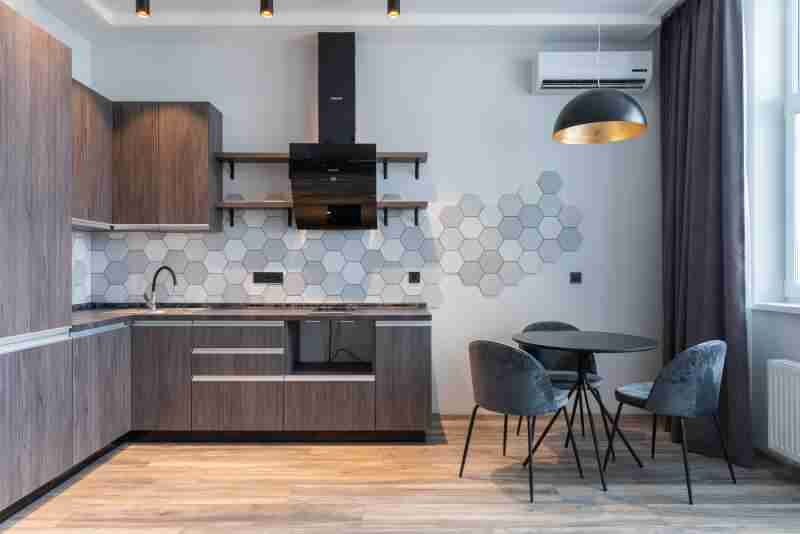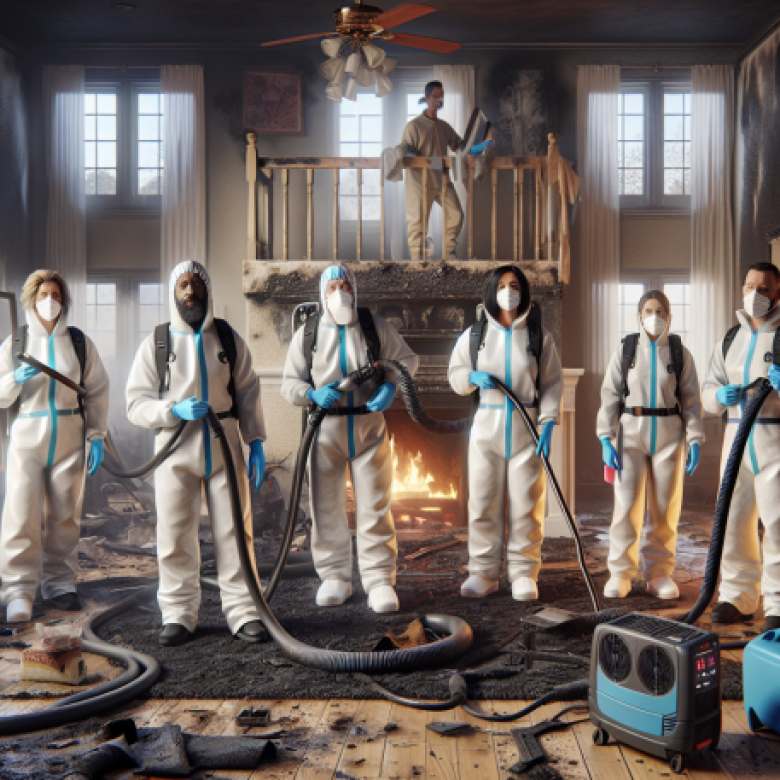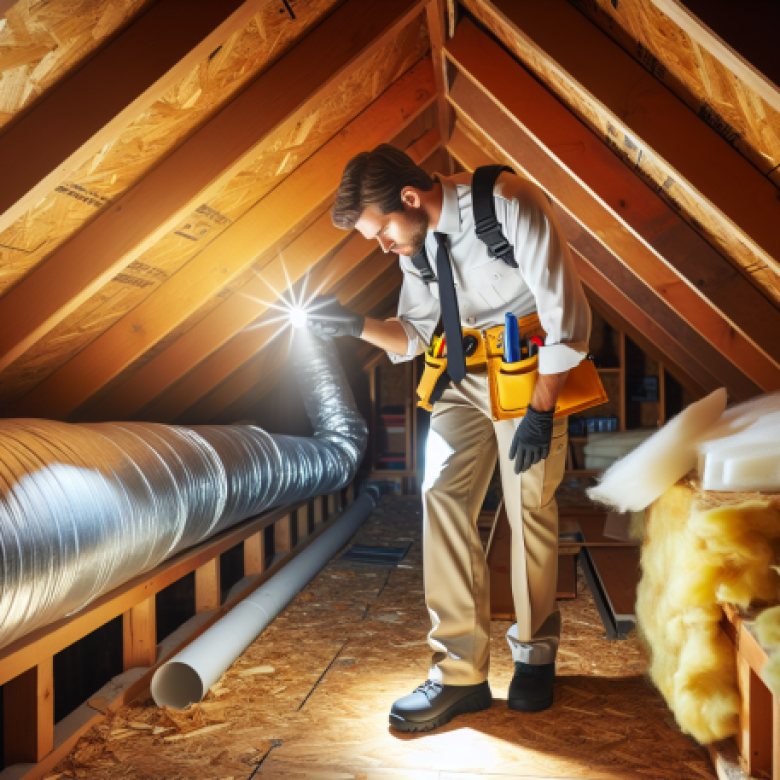At Projekt Restoration, we are not just experts in water, fire, and mold restoration. We also specialize in improving indoor air quality, a crucial aspect of maintaining a healthy and comfortable living environment. Our team understands the importance of clean, fresh air in your home or office, and we’re here to share our knowledge and expertise with you. This blog post will provide valuable tips and tricks on how to improve indoor air quality, reduce allergens, and create a safer, healthier space for you and your loved ones. We’ll also delve into the role of mold assessment, biohazard cleanup, and reconstruction services in maintaining optimal indoor air quality. So, whether you’re dealing with a post-disaster cleanup or simply want to breathe easier in your own home, Projekt Restoration is here to guide you every step of the way.
Understanding the Importance of Indoor Air Quality

Indoor air quality is a crucial aspect of maintaining a healthy living environment. It refers to the air quality within and around buildings and structures, especially as it relates to the health and comfort of building occupants. Poor indoor air quality can lead to a variety of health issues, including allergies, respiratory problems, and even certain types of cancer.
According to the Environmental Protection Agency (EPA), Americans spend approximately 90% of their time indoors, where the concentrations of some pollutants are often 2 to 5 times higher than typical outdoor concentrations. This makes the quality of indoor air a significant health concern.
“Indoor air quality can be two to five times more polluted than outdoor air, and in some cases, up to 100 times more polluted,” says the American Lung Association.
Improving indoor air quality involves several strategies, such as increasing ventilation, controlling the source of pollution, and using air purifiers. Regular maintenance of HVAC systems is also crucial in maintaining good indoor air quality.
For professional help in improving indoor air quality, contact Projekt Restoration. They offer a range of services, including mold assessment and dehumidification, which can significantly improve the quality of indoor air.
- Environmental Protection Agency (EPA): Introduction to Indoor Air Quality
- American Lung Association: Indoor Air Pollutants
Remember, a healthy home or workplace starts with good indoor air quality. It’s not just about comfort, it’s about health.
Common Indoor Air Pollutants and Their Sources

Indoor air quality is a crucial aspect of maintaining a healthy living environment. Various pollutants can contaminate the air within our homes, offices, and other indoor spaces, leading to potential health risks. One of the most common indoor air pollutants is dust, which can harbor allergens, bacteria, and viruses. Other pollutants include volatile organic compounds (VOCs) that emanate from products like paints, cleaning supplies, and even some types of furniture.
Tobacco smoke is another significant indoor air pollutant that can cause a range of health issues. Combustion pollutants, such as carbon monoxide and nitrogen dioxide, are produced by burning materials or improperly vented fuel-burning appliances like space heaters, wood stoves, gas stoves, water heaters, dryers, and fireplaces.
Mold and mildew, which thrive in damp and humid conditions, can also pollute indoor air and cause health problems. If you suspect mold growth in your home, consider using our mold assessment services.
Radon, a radioactive gas that comes from the natural decay of uranium in soil, rock, and water, can enter homes and buildings through cracks and holes in the foundation. It’s the second leading cause of lung cancer.
Pesticides, lead, and asbestos are other potential indoor air pollutants. To ensure your indoor air is clean and safe, it’s essential to identify and control the sources of pollutants. Regular cleaning, proper ventilation, and using air purifiers can help improve indoor air quality. For professional assistance, feel free to contact us at Projekt Restoration. We also offer a handy calculator to estimate the cost of our services.
Simple Tips to Improve Indoor Air Quality
Indoor air quality is a crucial aspect of maintaining a healthy living environment. Poor air quality can lead to numerous health issues, including allergies, asthma, and other respiratory conditions. Fortunately, there are several simple steps you can take to improve the air quality in your home.
Firstly, regular cleaning is essential. Dust and pet dander can accumulate quickly, leading to poor air quality. Use a vacuum with a HEPA filter to effectively remove these particles from your home. Additionally, consider investing in an air purifier. These devices can remove pollutants from the air, including smoke, dust, and pollen.
Secondly, proper ventilation is key. Opening windows and doors can help circulate fresh air and reduce the concentration of indoor pollutants. However, if you live in an area with high outdoor pollution levels, you may need to rely on mechanical ventilation, such as dehumidifiers or air conditioning units.
Thirdly, be mindful of the products you bring into your home. Many household items, including cleaning products and air fresheners, can release harmful chemicals into the air. Opt for natural, non-toxic alternatives whenever possible.
Lastly, consider seeking professional help if you’re dealing with more serious issues, such as mold or water damage. At Projekt Restoration, we offer a range of services, including mold removal and water damage restoration, to help you improve your indoor air quality and ensure a safe, healthy home.
The Role of Indoor Plants in Air Purification

Indoor plants play a significant role in enhancing the quality of air within our homes and offices. They act as natural air purifiers, absorbing harmful toxins and releasing fresh oxygen, thus improving the overall indoor air quality. Certain indoor plants like Spider Plant, Snake Plant, and Peace Lily are particularly effective in absorbing pollutants like formaldehyde, benzene, and carbon monoxide.
Moreover, indoor plants also help in maintaining the humidity levels, reducing the need for artificial dehumidification. They release approximately 97% of the water they take in, thereby increasing the moisture content in the air and reducing the risk of respiratory distress.
However, it’s essential to maintain these plants properly to ensure they effectively purify the air. Overwatering can lead to mold growth, which can adversely affect the air quality. If you suspect mold growth, consider getting a professional mold assessment done.
In addition, it’s also crucial to choose the right plants for your space. Some plants may require more sunlight than others, and placing them in a dark corner may hinder their growth and their ability to purify the air. For advice on the best plants for your space, you can reach out to our team through our contact page.
In conclusion, indoor plants are a natural, cost-effective way to improve indoor air quality. They not only purify the air but also add aesthetic value to your space, making it more inviting and pleasant.
Advanced Techniques for Enhancing Indoor Air Quality
Indoor air quality is a crucial aspect of maintaining a healthy living environment. Advanced techniques can significantly enhance the quality of air within your home or office, ensuring a safer, cleaner, and healthier space. One such technique is the use of high-efficiency particulate air (HEPA) filters. These filters can trap microscopic particles that other vacuum cleaners would simply recirculate back into the air of your home.
Another advanced technique is the use of dehumidifiers. High humidity levels can lead to mold growth and an increase in dust mites, both of which can degrade indoor air quality. Dehumidifiers help maintain optimal humidity levels, thus preventing these issues.
Moreover, regular cleaning of your home or office can also significantly improve indoor air quality. This includes dusting and vacuuming regularly, as well as cleaning or replacing air conditioner filters.
In case of severe issues like mold infestation or water damage, professional services like mold removal or water damage restoration can be sought. These services not only address the immediate problem but also help prevent future issues by addressing the root cause.
Lastly, indoor plants can also help improve indoor air quality. They absorb toxins and produce oxygen, thereby naturally purifying the air. However, care should be taken to choose plants that are non-toxic and safe for all members of the household.
By employing these advanced techniques, you can significantly enhance the quality of air in your indoor spaces, making them safer and healthier for everyone.
The Impact of Regular Maintenance on Indoor Air Quality
Regular maintenance of your home or office environment plays a crucial role in enhancing indoor air quality. It’s not just about dusting and vacuuming; it involves a comprehensive approach that includes checking and cleaning air vents, changing air filters, and ensuring proper ventilation.
One of the most effective ways to maintain good indoor air quality is by regularly changing air filters. Air filters trap dust, pollen, and other airborne particles that can affect air quality. If these filters are not replaced regularly, they can become clogged and ineffective, leading to poor air quality.
Moreover, air vents and ducts can also accumulate dust and other pollutants over time. Regular cleaning of these areas can significantly improve air circulation and quality. If you need professional help, you can contact experts who specialize in these services.
Another essential aspect of regular maintenance is ensuring proper ventilation. This can be achieved by opening windows to allow fresh air in and using exhaust fans to remove stale air. For more advanced solutions, you can consider installing air purifiers or dehumidifiers.
In addition to these, regular mold assessment is crucial as mold can significantly impact indoor air quality. If you suspect mold growth, it’s advisable to seek professional help for mold removal.
In conclusion, regular maintenance is a proactive approach to improving indoor air quality. It helps in creating a healthier and more comfortable living or working environment.
DIY Tricks for a Healthier Indoor Environment
Improving indoor air quality is crucial for maintaining a healthy living environment. One of the most effective ways to achieve this is through Do-It-Yourself (DIY) tricks that are not only cost-effective but also environmentally friendly. These tricks include regular cleaning and dehumidification, proper ventilation, and the use of air purifying plants.
Regular cleaning is essential in reducing dust and other allergens. However, it’s important to use natural cleaning products to avoid introducing harmful chemicals into your indoor air. For a more thorough cleaning, consider content cleaning services that specialize in restoring your home to its original condition.
Dehumidification is another effective DIY trick. High humidity levels can lead to the growth of mold and mildew, which can significantly degrade indoor air quality. You can use dehumidifiers or natural methods like placing moisture-absorbing plants or materials around your home. For professional help, you can reach out to dehumidification experts.
Proper ventilation is also crucial. It helps to remove stale air and introduce fresh air, reducing the concentration of pollutants indoors. This can be as simple as opening windows or using exhaust fans.
Lastly, consider using air purifying plants. Certain plants like spider plants, snake plants, and aloe vera are known for their ability to absorb harmful pollutants and release fresh oxygen.
For more complex issues like mold and water damage, professional services like mold assessment and water damage restoration are recommended. These services can help identify and address the root cause of poor indoor air quality, ensuring a healthier indoor environment.
In conclusion, improving indoor air quality is not just a matter of comfort, but a significant contributor to our overall health and well-being. By incorporating the tips and tricks discussed in this blog, such as regular cleaning, proper ventilation, use of air purifiers, and indoor plants, we can significantly enhance the quality of our indoor air. However, it’s important to remember that maintaining good indoor air quality is an ongoing process and not a one-time task. Let’s breathe easy, stay healthy, and make our indoor environments safer and more pleasant places to live and work in.




